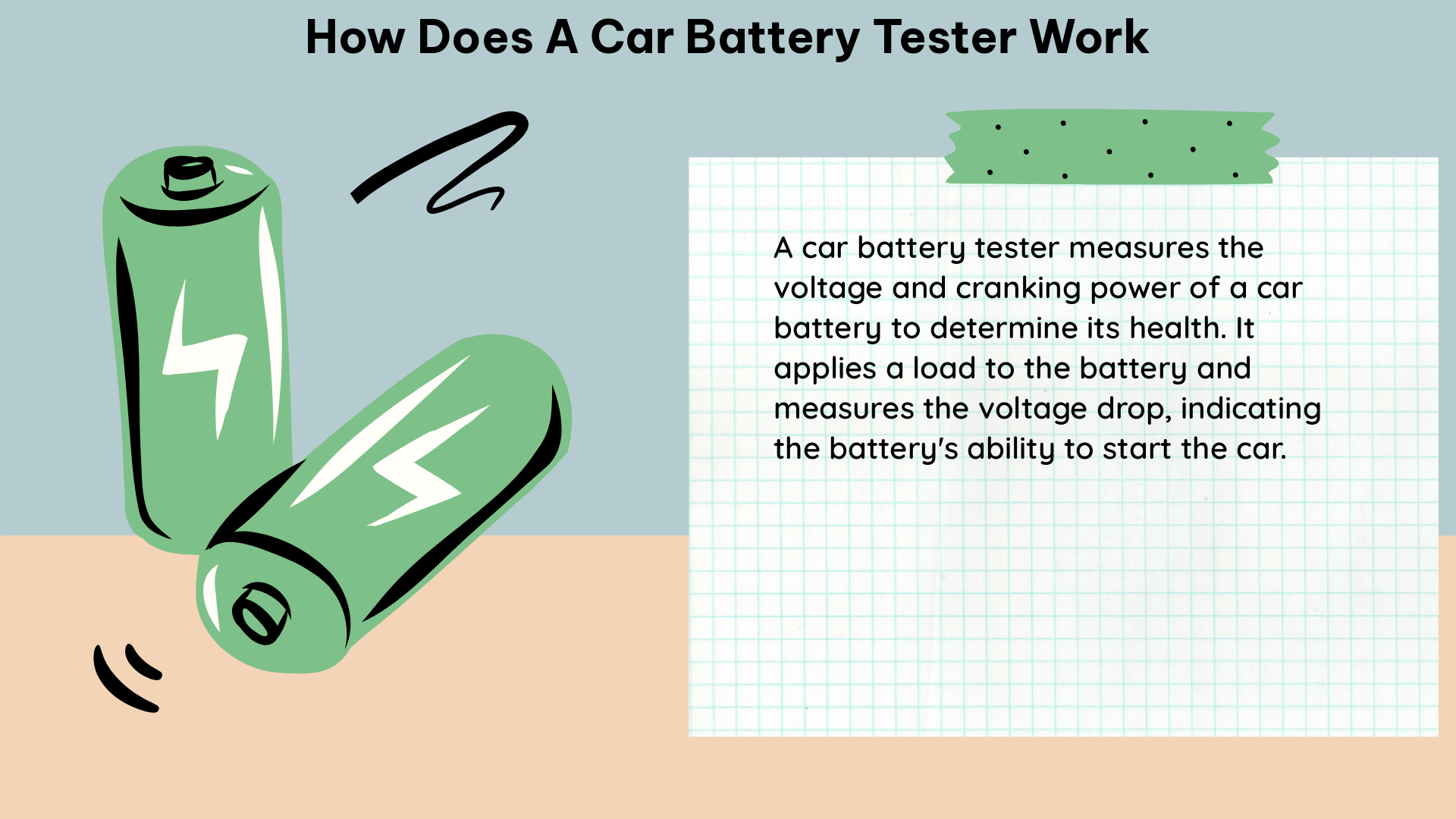A car battery tester is a crucial tool for maintaining the health and performance of your vehicle’s power source. By applying a load and measuring the voltage drop, these devices can provide valuable insights into the state of charge and overall condition of your car battery. In this comprehensive guide, we’ll delve into the inner workings of car battery testers, exploring the various testing methods and their unique features.
Conductance Testing: Measuring Battery Resistance
Conductance testing is a widely used method for evaluating a car battery’s condition. This approach leverages the battery’s own voltage to measure current and infer resistive values. The process is similar to using a digital multimeter (DMM) for basic testing procedures, such as voltage, resistance, and current measurements. However, conductance testers employ advanced algorithms to mathematically project the battery’s measurable outcomes.
Conductance testers are typically handheld, compact, and more cost-effective than dedicated battery testing carts. These devices provide exportable data files or immediate printable results, documenting the battery’s condition at the time of measurement. The test results often include detailed information about the battery’s design, post arrangement (side, top, or stud), voltage output, inferred amperage output, and an overall assessment of the battery’s condition based on the tool’s analysis.
Load Testing: Stressing the Battery

Load testing is another method used to assess a car battery’s condition. This approach involves loading the battery to the point of higher amperage output readings during the test. Load testers can be handheld or cart-based, and may feature analog and/or digital readouts to assist technicians in documenting the raw, measured values that project the battery’s condition.
One common load testing technique is the carbon pile test. In this method, the battery is forced to conduct through carbon elements under pressure, allowing the tester to measure live voltage and/or amperage. As the pressure on the carbon pile increases, the resistive value decreases, forcing the battery to exhaust its stored electrons. This process helps project how the battery’s performance is impacted by stress.
Digital Multimeter (DMM) Testing: Measuring Voltage and Resistance
Digital multimeter (DMM) testing is a straightforward method for evaluating a car battery’s condition. This approach uses a DMM to measure the battery’s voltage and resistance, providing a stable reading to project static voltage, continuous voltage declines, and charging system voltage output.
One important consideration when using a DMM for battery testing is the connection point. Battery voltage is limited to the connectivity between the post and terminal, so it’s recommended to compare post-to-post readings with post-to-terminal readings. This process may be influenced by the battery’s design, such as side-post batteries.
Advantages and Disadvantages of Testing Methods
Each car battery testing method has its own unique advantages and disadvantages, and the choice of method depends on the specific needs and resources of the user.
Conductance Testing:
– Advantages: Compact, cost-effective, provides detailed battery information, and generates exportable data.
– Disadvantages: May not provide as comprehensive an assessment as load testing.
Load Testing:
– Advantages: Provides a more comprehensive evaluation of the battery’s condition under stress.
– Disadvantages: Can be more time-consuming and may require dedicated testing equipment.
DMM Testing:
– Advantages: Simple, straightforward, and can be performed with a basic tool.
– Disadvantages: May not provide as much detailed information as other testing methods, and can be influenced by battery design.
Choosing the Right Car Battery Tester
When selecting a car battery tester, consider factors such as the level of detail required, the available budget, and the specific needs of your workshop or garage. Conductance testers may be a good choice for quick, routine battery checks, while load testers can provide a more comprehensive assessment for more complex battery issues. DMM testing can be a useful supplementary method, especially for quick voltage and resistance checks.
Ultimately, the choice of car battery tester will depend on your specific requirements and the level of detail you need to maintain the health and performance of your vehicle’s power source.
References:
– Howdo these car battery testers work? – EEVblog, 2013-05-28, https://www.eevblog.com/forum/beginners/howdo-these-car-battery-testers-work/
– 5 car battery testing methods explained – Vehicle Service Pros, 2022-02-21, https://www.vehicleservicepros.com/service-repair/article/21257507/5-battery-testing-methods-explained
– BU-901: Fundamentals in Battery Testing – Battery University, No date, https://batteryuniversity.com/article/bu-901-fundamentals-in-battery-testing

The lambdageeks.com Core SME Team is a group of experienced subject matter experts from diverse scientific and technical fields including Physics, Chemistry, Technology,Electronics & Electrical Engineering, Automotive, Mechanical Engineering. Our team collaborates to create high-quality, well-researched articles on a wide range of science and technology topics for the lambdageeks.com website.
All Our Senior SME are having more than 7 Years of experience in the respective fields . They are either Working Industry Professionals or assocaited With different Universities. Refer Our Authors Page to get to know About our Core SMEs.